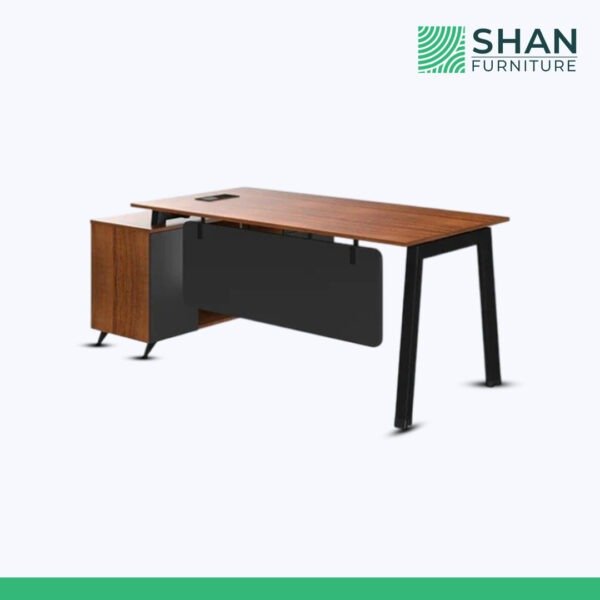When it comes to optimizing productivity and comfort in the workplace, choosing the right office workstation is a critical decision. A well-designed workstation not only supports the daily tasks of your team but also enhances employee satisfaction and performance. In this guide, we’ll explore the key factors you need to consider when selecting office workstations for your team, from ergonomics and space planning to budget and technology integration.
Why Office Workstations Matter
The design and functionality of an office workstation directly impact how your team works. Poor workstation setups can lead to discomfort, decreased productivity, and even health issues such as back pain or repetitive strain injuries. On the other hand, a carefully chosen workstation promotes focus, collaboration, and overall workplace well-being.
A quality office workstation:
- Provides ergonomic support
- Accommodates necessary tools and equipment
- Fits into the office layout efficiently
- Reflects your company’s culture and values
Step 1: Understand Your Team’s Needs
Before diving into workstation options, take the time to analyze how your team works.
Job Roles and Daily Tasks
Different roles require different setups. For example:
- Designers may need dual monitors and large desk space.
- Sales teams might prioritize phone access and CRM tools.
- Developers need ergonomic chairs and distraction-free environments.
List out specific needs for each team or department to ensure their office workstation supports their daily activities.
Collaboration vs. Individual Work
Do your employees spend more time working independently or collaborating with others? For collaborative teams, open-plan office workstations or benching systems may be ideal. For focused work, consider partitioned cubicles or height-adjustable desks with privacy screens.
Step 2: Consider Ergonomics
Ergonomics is not a luxury—it’s a necessity for long-term employee health and productivity.
Key Ergonomic Features
When choosing an office workstation, look for features that support good posture and comfort:
- Adjustable chairs with lumbar support
- Sit-stand desks or height-adjustable desks
- Monitor arms to maintain eye-level screens
- Keyboard trays to reduce wrist strain
Customization is Key
Not all bodies are the same. Opt for office workstations that offer flexibility and can be customized for each individual.
Step 3: Plan Your Office Layout
Space planning is crucial in maximizing efficiency and maintaining a professional environment.
Measure Your Space
Before purchasing any office workstation, measure the available space. Leave room for movement, meeting areas, storage, and common areas.
Optimize Flow
A well-planned layout promotes workflow. Group teams that frequently collaborate close together. Ensure walkways are unobstructed and comply with safety regulations.
Choose a Configuration
Popular office workstation configurations include:
- Linear workstations – Ideal for large, open spaces
- Cluster or pod configurations – Encourage collaboration
- Cubicles – Offer privacy and focus
- Hot desks – Support flexible or hybrid work environments
Step 4: Select the Right Materials and Style
Aesthetics and durability go hand-in-hand when choosing an office workstation.
Material Options
- Laminate – Affordable and easy to clean
- Wood veneer – Offers a premium look but at a higher cost
- Metal and glass – Modern and sleek, but may be cold or noisy
Choose materials that match your office’s design and your budget.
Style Considerations
The style of your office workstation should reflect your company’s brand and culture. A tech startup might opt for minimalist, modern desks, while a law firm might prefer classic wood finishes and executive-style setups.
Step 5: Integrate Technology
Technology is integral to most office jobs today, and your office workstation should support seamless tech integration.
Cable Management
Look for desks with built-in cable management systems to reduce clutter and improve safety.
Power and Data Access
Ensure workstations offer accessible power outlets, USB ports, and data ports to keep devices connected and charged.
Monitor and Accessory Mounts
If your team uses multiple screens or accessories, mounting solutions help free up valuable desk space.
Step 6: Factor in Storage Needs
Storage can make or break the functionality of a workstation.
Types of Storage
- Under-desk cabinets or pedestals for personal items
- Overhead shelves for books and reference materials
- Shared filing cabinets for team access
Ensure your chosen office workstation includes—or allows for—customizable storage options.
Step 7: Budget Wisely
Budget will naturally influence your decision, but it’s important to look at the long-term value, not just the upfront cost.
Invest in Quality
Cheap office workstations may wear out quickly or lack ergonomic support, leading to replacement costs or even health-related absenteeism.
Bulk Discounts and Leasing
Many furniture suppliers offer bulk discounts for larger orders. Leasing options can also provide high-quality workstations with lower upfront costs.
Step 8: Plan for Scalability
Your office needs may evolve as your business grows. Choose office workstations that are modular and easy to reconfigure.
Flexible Workstations
Look for furniture that can adapt to different roles or spaces. Modular desk systems allow you to expand or rearrange without needing an entirely new setup.
Step 9: Prioritize Sustainability
Sustainability is increasingly important in modern office design.
Eco-Friendly Materials
Select office workstations made from sustainable materials such as recycled wood, low-VOC finishes, and eco-certified laminates.
Lifecycle and Reusability
Furniture with a long lifespan or that can be repurposed supports sustainable business practices.
Step 10: Involve Your Team
Finally, involve your employees in the decision-making process. They’ll be using the office workstation daily, so their input is invaluable.
Gather Feedback
Ask employees about their preferences and pain points with current setups. Their feedback will help you choose workstations that genuinely improve productivity and comfort.
Conclusion
Choosing the right office workstation for your team is a strategic decision that impacts performance, comfort, and satisfaction. By understanding your team’s unique needs, planning your space efficiently, prioritizing ergonomics, and thinking long-term, you’ll create a workspace that supports both productivity and well-being.
Real More: Enhancing Productivity with the Right Office Workstation













Leave a Reply